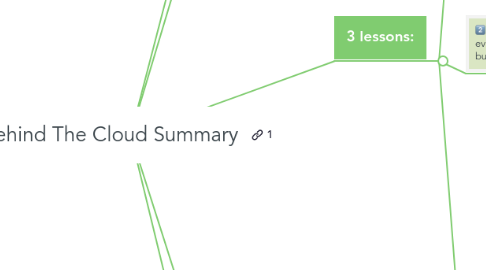
1. 1-Sentence-Summary:
1.1. Behind The Cloud tells the story of Salesforce.com, one of the biggest and earliest cloud computing, software-as-a-service companies in the world and how it went from small startup to billion-dollar status.
2. Favorite quote from the author:
2.1. "One idea alone is a tactic, but if it can be executed a number of different ways, it becomes a great strategy." - Marc Benioff
3. 3 lessons:
3.1. Focus your marketing on the end user of your product, even if you’re in B2B.
3.1.1. One of the ways Salesforce tried to harness the human desire to share was to focus on editorials, which are written up, unbiased reviews by individuals, published in news outlets or even on personal blogs.
3.1.2. Another was going after testimonials, which is when a user tells about his or her success with the product and thus inspires others to give your service a try.
3.1.3. In spite of being an online business, Salesforce found offline events to be a great avenue to pursue both of these.
3.1.3.1. Instead of pitching the executives in charge of the money and decisions, who would ultimately have little to do with the product, they held public events for the end users of their product: sales agents, customer service people, etc.
3.1.3.2. These “City Tours” were dedicated to celebrating real customers, packed with keynotes, user demos, customer presentations and even posters of users as a tribute.
3.1.3.2.1. As a result, around 80% of prospects ended up becoming customers.
3.1.3.3. Eventually, they later replicated this by hosting private cocktail parties, which were less costly, but just as user-focused.
3.2. Always do what’s best for the customer, even if it scares you and might hurt your business.
3.2.1. Salesforce started with a mission to bring about “the end of software.”
3.2.1.1. That’s a scary thing to announce, but an even scarier to thing to actually live and breathe.
3.2.2. On several occasions, this meant Marc had to make decisions that had the potential to hurt the business, but were ultimately what’s best for the customer.
3.2.2.1. For example, they used a model called “multitenancy,” which meant users could use the software right from Salesforce’s servers, but still work with their own data
3.2.2.1.1. Now cloud computing has become standard, but this was scary in 2000.
3.2.2.1.2. However, because it allowed Salesforce to give all users access to new features and updates simultaneously, it improved the experience for everyone.
3.2.2.2. Similar decisions included a public bug report system and giving all developers access to the code to build their own apps on top of the platform.
3.3. When going global, remember to respect the context of other cultures.
3.3.1. When Salesforce dipped its toe into overseas water for the first time, they set up headquarters in Dublin, Ireland, for two reasons:
3.3.1.1. They spoke English.
3.3.1.2. The tax rate was just 12.5%.
3.3.2. This made it less scary and easier to get into the mindset of adapting to each new market’s individual culture and needs.
3.3.2.1. For example, to break into Germany, they hired only German native speakers, so people who called in weren’t immediately faced with a language barrier.
3.3.2.2. To satisfy the high standards of corporate partners in London, they held meetings in big hotels, instead of renting expensive office space.
3.3.2.3. And because people in Japan are modest, respectful and reserved, they decided not to market as aggressively as they did in the US, choosing to slowly ease into conversations by mentioning more famous, Western names, like Google or Amazon alongside their own.
3.3.2.3.1. Once they closed deals with Canon and the Japan Post, they could use those as references and selling became a lot easier.
3.3.3. Remember, different cultures have different contexts, which must be respected in business just as much as in life.
